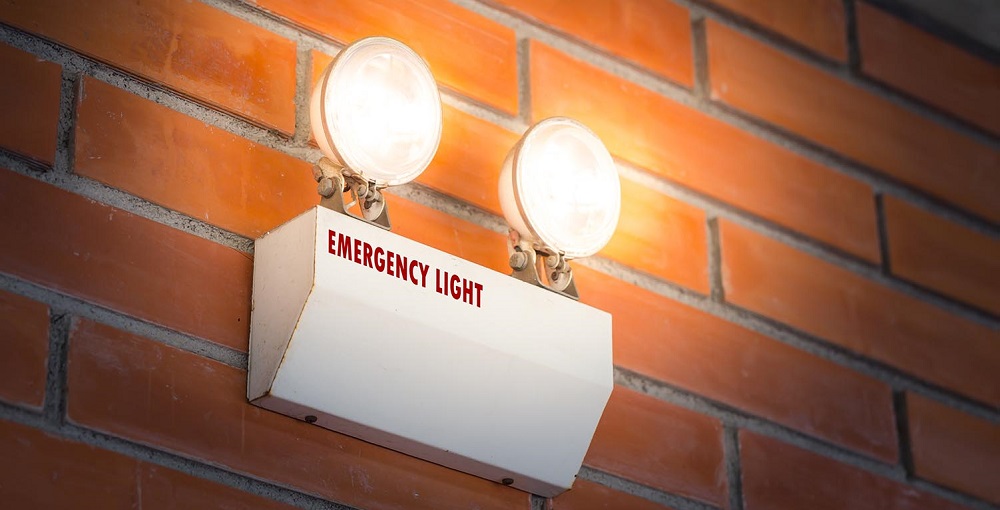LED emergency bulbs are an invaluable way to prepare your home for power outages, providing protection when electricity fails and automatically switching on when electricity fails. Simply screw these in with existing light fixtures and they’ll switch on automatically if electricity goes out!
Candles or torches do not offer enough visibility for safety and household tasks in dark corners, while rechargeable LED bulbs such as Eveready’s DL95 and DL97 offer 3-4 hours of backup illumination.
Brightness
Emergency lighting can make all the difference during a power outage or other disaster, and its brightness must meet all requirements for your location and intended use. Lumens is one way of measuring emergency light brightness – this number represents how much visible light the fixture produces; so the higher its lumen count is, the brighter it will appear in an emergency situation.
Emergency lights are intended to help occupants evacuate buildings safely. Their effectiveness may be hindered by age, voltage fluctuations and battery degradation – therefore it’s essential that regular tests take place to ensure they continue working correctly.
There are a few different ways you can test your emergency lights, with the easiest being pressing and holding the test button found on most units for thirty seconds – this should ensure the unit remains on at a constant brightness level throughout.
Another way of testing emergency lights is conducting a light level study. This involves measuring ambient brightness levels in a room and comparing them with emergency lighting recommendations; for instance, stairs should be illuminated to at least one lux while corridors and anti-panic areas should have five to ten lux.
Runtime
Emergency lighting resources are crucial in keeping your family safe during power outages, from candles and torches, which may only last briefly, to rechargeable LED bulbs that come equipped with built-in batteries to deliver long-term backup lighting solutions that feature smart charging features as well as overcharge protection features for added battery safety.
Preparing your family and pet for unexpected situations with an effective home emergency preparedness plan is of utmost importance, especially during times when power goes out. Establishing meeting spots for family, establishing communication channels like walkie-talkies, outlining evacuation procedures and outlining escape routes as part of this preparation can all help protect against unnecessary panic and stress.
As part of your emergency plan, it is also vital that you have access to suitable tools and lighting sources should the power go out. Emergency lights like flashlights and lanterns are often the go-to choice, but these options can become unreliable as batteries deplete and wires break. Battery-powered LED emergency lights offer reliable illumination that last up to three hours of illumination time. Many models can be easily checked monthly by pressing their test buttons, while some even feature auto switch technology that eliminates manual control altogether. Eveready’s DL95 and DL97 LED emergency bulbs offer a simple yet reliable solution that serves both as regular bulbs when powered by electricity, and as emergency lights when power is lost.
Portability
Staying prepared for power outages is an obligation that every household should accept and embrace. By developing a comprehensive safety plan, using alternative lighting solutions and safeguarding vital medical equipment, households can ensure their loved ones – including any furry members – remain safe during these unpredictable situations.
Emergency lights along evacuation routes are an integral component of this process, ensuring people can exit safely in an emergency or natural disaster situation.
When purchasing an emergency light, it’s essential that you select one with enough illumination for all areas of the room. Look for one with sufficient brightness level, automatic activation and adjustable settings as well as rechargeability or backup battery support to ensure continuous use.
Also look for warranties and after-sales support as these can indicate a manufacturer’s commitment to quality and reliability. Keep in mind that emergency lights need regular testing and maintenance – at least once every month with a reminder set for it if solar-powered lighting. Also ensure the batteries receive sunlight throughout the day to fully charge, which will improve functionality and prolong battery life for improved functionality and longevity.
Light source
Emergency lights must meet certain safety requirements to remain bright and durable, from being LEDs or battery-operated models – be they LED or battery. Be on the lookout for certification labels certifying them as compliant with local regulations to help avoid fines or safety risks in the future.
Selecting an emergency light requires first identifying which kind of power failure you anticipate, then searching for the ideal solution for either your home or business.
Entrances and Exits: Installing lights near doors and hallways helps illuminate escape routes during a power outage, helping all those in your building evacuate safely. Stairways: Illuminating staircases helps prevent accidents during power outages by providing clear visibility – this is particularly crucial on steep-graded staircases.
Glow sticks and handheld flashlights provide instant, portable illumination without batteries or electricity, but are limited in brightness and duration. Flashlights offer hands-free lighting with focused illumination for moving tasks or moving around easily; some models even feature built-in radios that play NOAA weather updates during an outage.
Consider whether you would benefit from having lights that automatically activate during a power outage, providing extra safety during times of disaster. Such lights could help ensure family and employees stay secure during an emergency situation.

